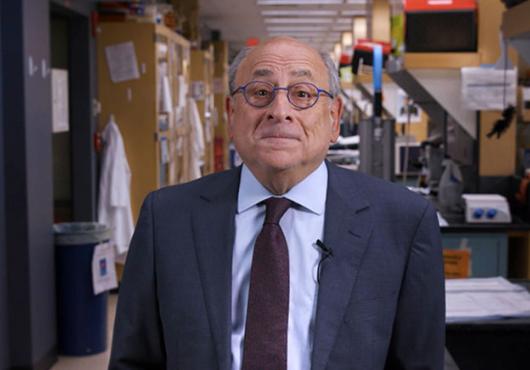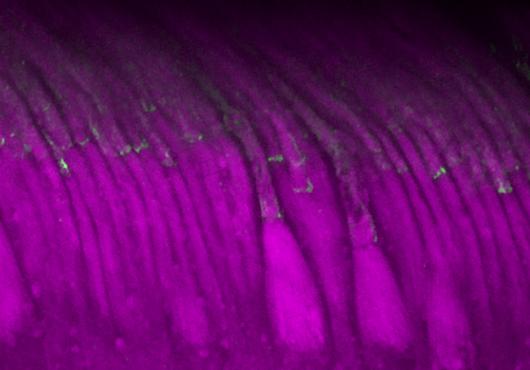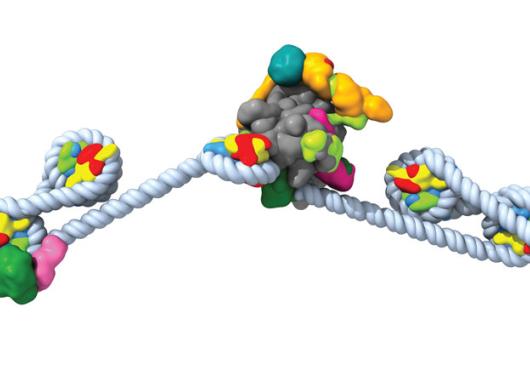
When neurobiologist David Corey showed up at a rare disease conference in 2017, he had no idea that he would enter a race against time to develop a treatment for it.
The conference was for Usher syndrome type 1F. Patients with this condition have a gene mutation that causes them to be born deaf and gradually lose their vision as they grow up. Corey, the Bertarelli Professor of Translational Medical Science in the Blavatnik Institute at Harvard Medical School, had devoted decades to studying the defective gene in a different context.
So when Corey happened upon an announcement for an Usher 1F conference in Boston, he knew he had to attend.
There, he introduced himself to Elliot Chaikof, chief of surgery at Beth Israel Deaconess Medical Center and the Johnson and Johnson professor of surgery at HMS, his wife Melissa, and their adult daughters, Rachel and Jessica, both of whom have Usher 1F. The Chaikofs had organized the conference through the nonprofit research collaborative they founded to find a treatment for the blindness part of the disease.
Meeting the Chaikofs — and especially Rachel and Jessica — stirred in Corey a powerful desire to help.
“We really felt that we know so much about this gene, if we don’t try to do something for the disease, who else is going to,” Corey said.
Six years later, the Corey lab has three candidate gene therapies for Usher 1F blindness. Each takes a different approach to correcting the disease-causing mutation.
The researchers are now testing the therapies in animal models and are confident that at least one will move to clinical trials in humans to become a successful treatment.
Defining the problem
Usher 1F is a particularly severe form of Usher syndrome, in which a gene mutation causes cells in the eye and ear to stop producing an essential protein. Rachel and Jessica’s gene mutation is most prevalent in the Ashkenazi Jewish community.
People with Usher 1F are usually born deaf and lacking the ability to balance. They develop an eye disease called retinitis pigmentosa, which causes a progressive loss of vision as the retina degenerates. Night vision often disappears first, followed by peripheral vision. For Jessica, this has meant giving up driving and getting a service dog to help her navigate the world around her. Eventually, people become completely blind.
“Everyone with Usher 1F has a unique experience, but one of the biggest challenges for me is slowly losing my independence as I lose my vision,” Jessica said.
Like many people with Usher 1F, Rachel and Jessica have benefited from cochlear implants, which have improved their ability to hear and communicate. However, the Chaikofs learned soon after their daughters were diagnosed that there was almost no research on the condition and virtually no therapies to treat it — so in 2013, they established Usher 1F Collaborative.
“Essentially there were zero research groups working on this particular problem — nothing, nobody,” Elliot said.
A call to action
While the Chaikofs were seeking answers, the Corey lab in the Department of Neurobiology at HMS was studying a protein called protocadherin-15 and its role in deafness.
The researchers figured out that protocadherin-15 in the inner ear helps sensory receptors called hair cells convert mechanical vibrations into electrical signals, which the brain interprets as sound. Without protocadherin-15, the conversion doesn’t happen, and the brain is unable to detect sound.
They also found protocadherin-15 in light-sensing cells, or photoreceptors, in the eye. However, they weren’t sure of its exact function there, nor did they know why people lacking the protein in their eyes lose their sight over time.
In the course of the research, Corey had become aware that in Usher 1F, a mutation in the gene that makes protocadherin-15 causes cells in the ear and eye to stop producing it.
Connecting with the Chaikofs gave Corey a new motivation for his research and reinvigorated the family’s quest for a cure.
“Because David understood the gene so well, he basically leapfrogged ahead of where the research was and hit the ground running,” said Melissa, who is chair of Usher 1F Collaborative.
“For the first time we felt as if we had someone who could truly make a difference on this particular problem,” Elliot added.
A daunting endeavor
The Corey lab chose to focus on the blindness aspect of Usher 1F, in part because patients are born profoundly deaf and lacking hair cells, making it unlikely that a therapy could restore their hearing. However, they are born with normal vision that gradually deteriorates, allowing time to intervene to preserve their sight.
The team found the perfect point person in Maryna Ivanchenko, an instructor in neurobiology at HMS who joined the lab to learn about gene therapy for deafness, but by serendipity is also an ophthalmologist and eye surgeon.
“Maryna has been absolutely central to this project because she understands both the hearing and the blindness aspects of this disease,” Corey said.
The researchers decided the way forward would be to design a gene therapy that either replaces or repairs the defective DNA that codes for protocadherin-15. Delivered inside eye cells, such a therapy would allow the cells to make the missing protein.
We really felt that we know so much about this gene, if we don’t try to do something for the disease, who else is going to.
David Corey
Bertarelli Professor of Translational Medical Science at HMS





